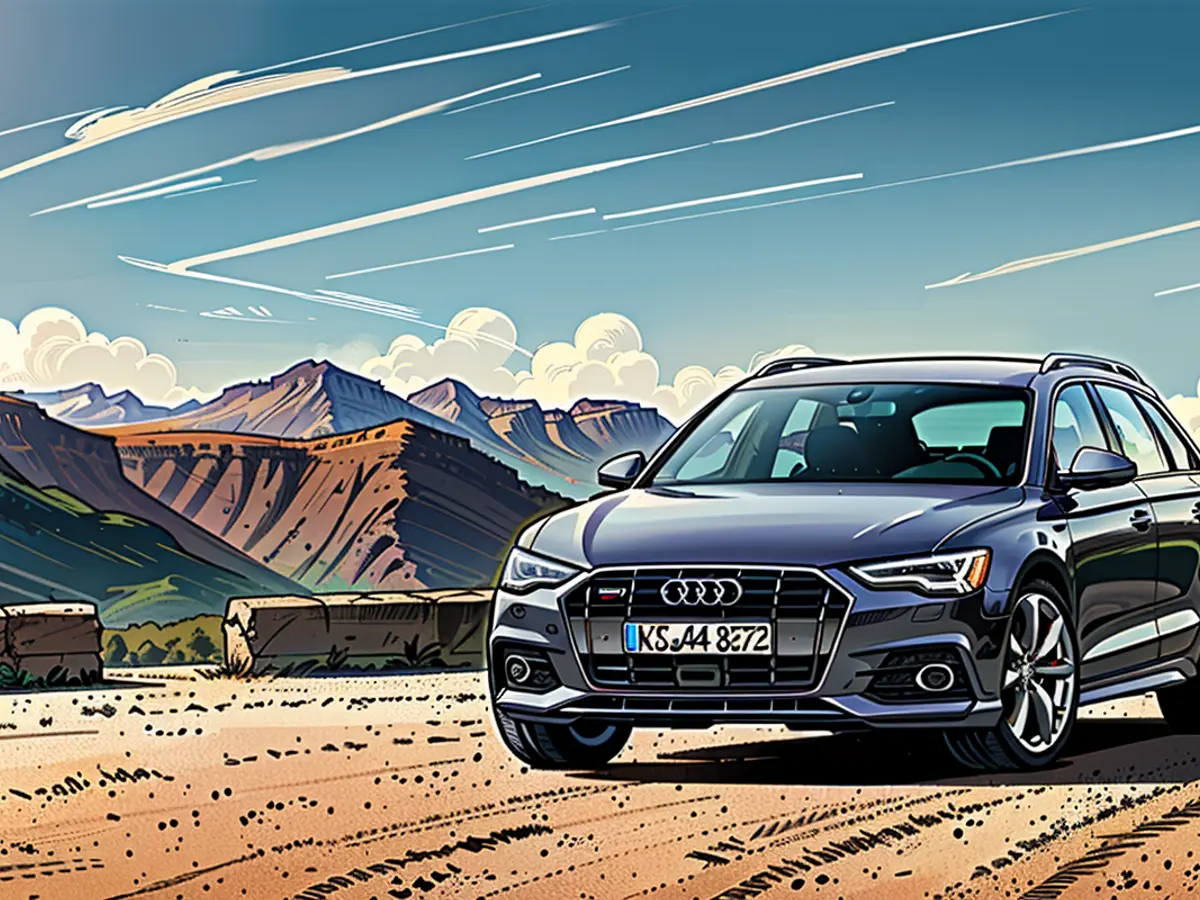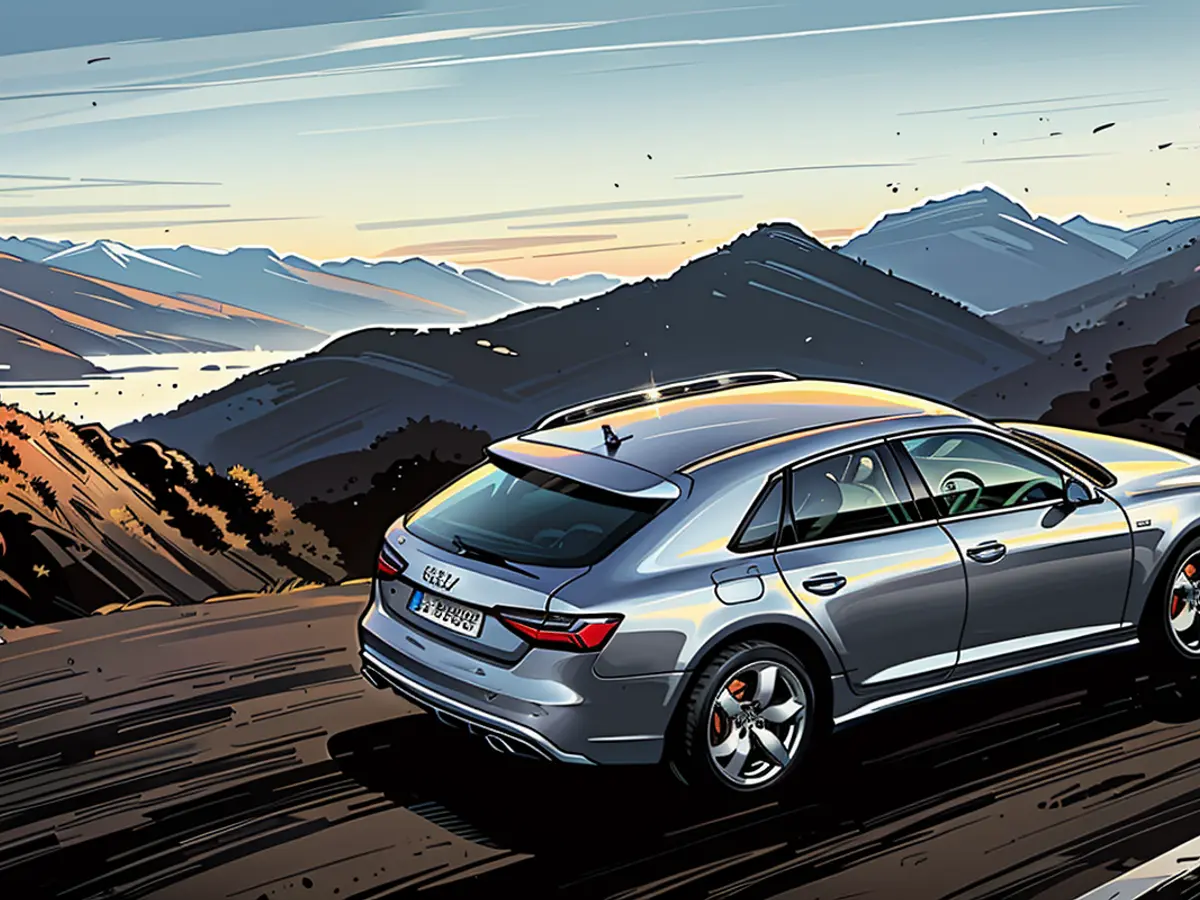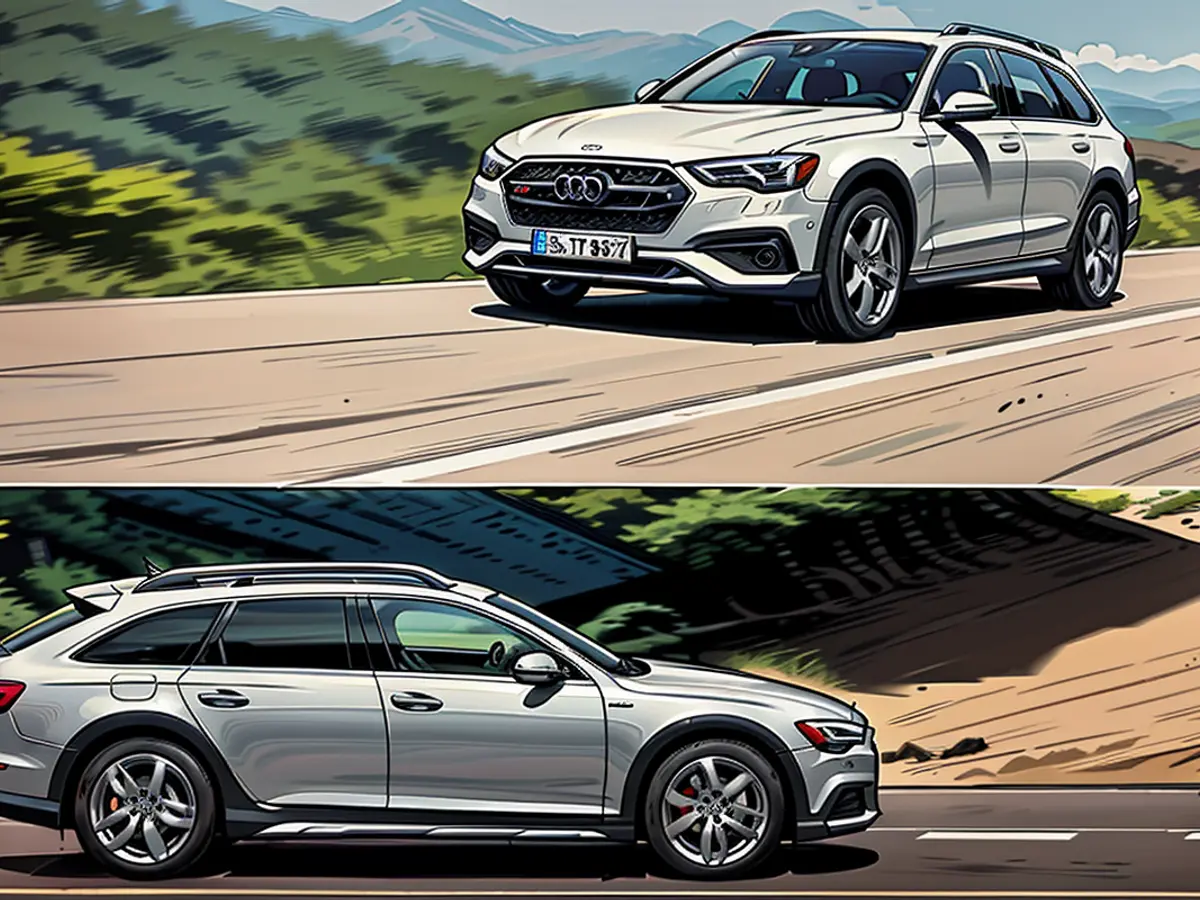Mercedes E 450 d All Terrain vs. Audi A6 Allroad 55 TDI quattro
Two combis with a slight SUV appeal. Elegant, comfortable, and expensive. And bear-strong motorized. When comparing the Mercedes E 450 d All Terrain and the Audi A6 Allroad 55 TDI in a test: Which one is better? Or are they about even?
In their competition for premium customers, many products of the three German luxury manufacturers Mercedes, Audi, and BMW are becoming increasingly similar. Our two test candidates, two diesel combis of the upper-middle class in a light outdoor outfit, are similar in many respects: in terms of vehicle dimensions, for example, and also in terms of the drivetrains. However, there are also significant differences.
Without a doubt, the E-Class is the more modern car, as it has not been on the market for a year. The All Terrain, the higher, planked, and thus terrain-capable version of the bestseller, comes with the large diesel even though it has only been available for half a year. The 3.0-liter inline-six-cylinder produces 270 kW/367 PS, while an additional 17 kW/23 PS is provided by the 48-volt mild-hybrid system. All-wheel drive is standard.
The same applies to the Audi A6 55 TDI, where all-wheel drive is called quattro, and the "terrain" version is called Allroad. And the drivetrain is similar, a six-cylinder diesel - not in-line, but V-arranged - with 253 kW/344 PS. However, the fourth generation of the A6 Allroad came out in 2019, and it underwent a major facelift last year.
Engines and performance similar

The powerful engines differ subjectively little, both are bear-strong and make the over two-tonne vehicles light on their feet. The performance is comparable, the Audi requires 5.2 seconds to reach 100 km/h, the Mercedes does it two tenths of a second faster. Negligible. At the top speed, there is a tie with each having a top speed of 250 km/h.
The differences between the inline-six of Mercedes and the V6 of Audi are most noticeable in fuel consumption. Both the norm and the test consumption are lower for the Mercedes, with us achieving 7.4 and 8.2 liters, respectively, which is still acceptable considering some aggressive test drives. The Mercedes' thirst for fuel may be due to the electric assistance of the mild-hybrid system. Pleasantly in times of range anxiety: If the premium combis are not driven too hard, consumption values around 6 liters and thus ranges in the 1000-kilometer range can be achieved.
Good for long stretches
Both cars (and their drivers) feel most comfortable on long stretches. Depending on taste and mood, both engines provide enough power for faster sections or an overtaking maneuver. They can also be driven at cruising speed, save fuel, and barely hear the diesel. Additionally, both come with an adaptive suspension, which takes the edge off of poor roads.

Almost unnecessary to mention, but both cockpits meet the highest requirements in terms of seats - the ones in the Mercedes are even a notch better. However, both cars are not as well-suited for city driving. With a length of 4.95 meters and turning circles of 12 meters (Mercedes) or 11.10 meters, the maneuverability is objectively challenging, although it often doesn't feel that way subjectively.
One must naturally ask oneself, is the slight "SUVization" really necessary? Besides the slightly higher ground clearance and the associated easier entry, Allroad and All Terrain offer few advantages. After all, who wants to leave the asphalt with these luxury combis and risk getting a scratch in the expensive paint job on a forest trail? Exactly.
Subjectively, the Audi offers a more analog and direct driving experience despite its many assistants and three displays in the dashboard. Some pilots may indeed savor this. On the other hand, the Mercedes is unsurprisingly more comfortable and comes with Mercedes' MBUX system, which boasts a faster and more intelligent voice control. These differences are worth enduring.
A Clear Victory in Terms of Space, a Draw in Price

The E-Class, however, clearly wins in terms of space. In the rear seats, it offers more legroom and a more spacious trunk, with a capacity of 615 to 1830 liters, compared to the A6, which offers only 565 to 1680 liters.
However, Audi counters with a price advantage. The E 450 d 4Matic All Terrain, the full name of the wagon, is listed at exactly 92,487 Euro, while Audi asks for only 77,000 Euro. Given that both contenders require significant additional investments from their buyers to have most of the amenities on board, it's amusing that the Mercedes, which costs significantly more than 110,000 Euro with all the extras, doesn't come with a Head-up Display (HUD). But there's no need to worry: You can order almost everything as an extra that we would recommend. The HUD is included with Audi, and it costs a slim 1,400 Euro.
Despite the nearly 15,500 Euro price difference, you can order a lot of extras with the Audi as well. Both models are expensive to purchase and maintain. You can certainly live well with the E-Class as with the A6. In our humble opinion, the normal wagon version with a smaller diesel engine is the best choice.
Mercedes E 450 d All Terrain T-Model - Technical Data

- Five-seater, five-seat station wagon of the upper middle class
- Length: 4.95 meters, width: 1.89 meters (with mirrors: 2.07 meters), height: 1.50 meters, wheelbase: 2.96 meters, trunk volume: 615-1830 liters
- 3.0-liter inline-six-cylinder diesel, 270 kW/367 PS + 17 kW/23 PS from 48-volt mild-hybrid system, maximum torque: 750 Nm, all-wheel drive, 9-speed automatic transmission, 0-100 km/h: 5.0 s, top speed: 250 km/h, fuel consumption (NEDC): 6.2-6.9 liters/100 km, CO2 emissions (NEDC): 163-181 g/km, test consumption: 7.4 liters/100 km
- Price: from 92,487 Euro
Audi A6 Allroad 55 TDI quattro - Technical Data
- Five-seater, five-seat station wagon of the upper middle class; length: 4.95 meters, width: 1.90 meters (with mirrors: 2.11 meters), height: 1.51 meters, wheelbase: 2.93 meters, trunk volume: 565-1680 liters
- 2.0-liter V6 diesel, 253 kW/344 PS, maximum torque: 700 Nm, all-wheel drive, 8-speed automatic transmission, 0-100 km/h: 5.2 s, top speed: 250 km/h, fuel consumption (NEDC): 6.9-7.5 liters/100 km, CO2 emissions (NEDC): 181-196 g/km, test consumption: 8.2 liters/100 km
- Price: from 77,000 Euro
The Audi A6 Allroad 55 TDI and the Mercedes-Benz E 450 d All Terrain are both off-road capable diesel-powered luxury vehicles, with the Audi featuring a V6 diesel engine and the Mercedes an inline-six diesel with mild-hybrid technology. These Audi-Models and Mercedes-Models share similar powerful engines, capable of impressive performance and fuel efficiency, especially on long stretches.
Despite their high-end interiors, both cars lack maneuverability in tighter urban areas due to their size and turning circles. In terms of space, the Mercedes-Models offer more legroom and cargo capacity, but the Audi-Models are more affordably priced, with comparable features and a slightly better price-to-performance ratio.









